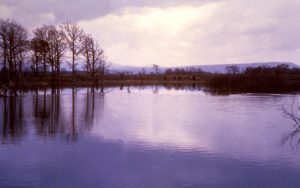Tragic shooting at Marshall County HS…Shooter is in custody, one confirmed fatality, multiple others wounded…Much yet unknown…Please do not speculate or spread hearsay…Let’s let the first responders do their job and be grateful that they are there to do it for us…
Archive for January, 2018
5 Islamic State gunmen stormed the Save the Children office in the Afghan city of Jalalabad after an explosion on Wednesday, killing 5 and wounding dozens in a 10-hour siege.
Thursday, January 25th, 2018Rohingya: US diplomat resigns from international advisory board because it was a “whitewash” and he did not want to be part of a “cheerleading squad for the government [Myanmar]”.
Thursday, January 25th, 2018The World Resources Institute: 33 countries projected to face extremely high water stress (i.e. shortage of fresh water) in 2040.
Thursday, January 25th, 2018From 1 July 2017 through 14 January 2018, 35 confirmed human cases of Yellow Fever were reported in Brazil (Figure 1), including 20 deaths and 145 suspected cases who are under investigation.
Thursday, January 25th, 2018January 24, 1939: An 8.3-magnitude earthquake centered in south central Chile leaves 50,000 people dead and 60,000 injured.
Wednesday, January 24th, 2018Human Rights Abuse: People with severe mental disorders endure abuse around the world, caged, warehoused in institutions, and imprisoned.
Wednesday, January 24th, 2018“….Drug treatment, mostly for psychosis, blunted day-to-day symptoms of hallucinations and delusional thinking. But it did not reduce the length of time people were held in chains at the camp.…”
“Care of people with serious mental illness in prayer camps in low-income countries generates human rights concerns and ethical challenges for outcome researchers.
To ethically evaluate joining traditional faith healing with psychiatric care including medications (Clinical trials.gov identifier NCT02593734).
Residents of a Ghana prayer camp were randomly assigned to receive either indicated medication for schizophrenia or mood disorders along with usual prayer camp activities (prayers, chain restraints and fasting) (n = 71); or the prayer camp activities alone (n = 68). Masked psychologists assessed Brief Psychiatric Rating Scale (BPRS) outcomes at 2, 4 and 6 weeks. Researchers discouraged use of chaining, but chaining decisions remained under the control of prayer camp staff.
Total BPRS symptoms were significantly lower in the experimental group (P = 0.003, effect size –0.48). There was no significant difference in days in chains…..”
Save the Children offices in Afghanistan hit by attack. At least two people have been killed and 12 injured.
Wednesday, January 24th, 2018Benton, Kentucky: Two students were killed Tuesday and 18 other people were wounded when a 15-year-old boy armed with a handgun opened fire inside Marshall County High School
Wednesday, January 24th, 2018Kentucky school shooting: 1 dead & at least 1/2 dozen wounded. Shooter in custody;
Tuesday, January 23rd, 2018M 7.9 – 280km SE of Kodiak, Alaska: Tsunami alert
Tuesday, January 23rd, 2018Tectonic Summary
The January 23, 2018 M 7.9 earthquake southeast of Kodiak Island in the Gulf of Alaska occurred as the result of strike slip faulting within the shallow lithosphere of the Pacific plate. Focal mechanism solutions indicate faulting occurred on a steeply dipping fault striking either west-southwest (left lateral) or north-northwest (right lateral). At the location of the earthquake, the Pacific plate is converging with the North America plate at a rate of approximately 59 mm/yr towards the north-northwest. The Pacific plate subducts beneath the North America plate at the Alaska-Aleutians Trench, about 90 km to the northwest of today’s earthquake. The location and mechanism of the January 23rd earthquake are consistent with it occurring on a fault system within the Pacific plate before it subducts, rather than on the plate boundary between the Pacific and North America plates further to the northwest.
While commonly plotted as points on maps, earthquakes of this size are more appropriately described as slip over a larger fault area. Strike-slip-faulting events of the size of the January 23, 2018 earthquake are typically about 230×30 km (length x width).
Large earthquakes are common in the Pacific-North America plate boundary region south of Alaska. Over the preceding century, 11 other M7+ earthquakes have occurred within 600 km of the January 23, 2018 earthquake. Most of these have occurred on the subduction zone interface between the two plates, to the north and northwest of today’s earthquake, including the M 9.2 Great Alaska earthquake of March 1964. The hypocenter of the 1964 event was located about 550 km to the north of the January 23rd earthquake, and the rupture of that event broke much of the shallow subduction zone interface over several hundreds of kilometers. To the southeast of the Alaska Trench, two large (M 7.9 and M 7.8) strike slip earthquakes occurred in November 1987 and March 1988, respectively, several hundreds of kilometers to the east of the January 23, 2018 earthquake. These two earthquakes are not known to have caused any casualties or damage.
A tsunami warning is in effect for southeast and south Alaska, including the Alaska Peninsula and Aleutian Islands, as well as British Columbia in Canada. A tsunami watch is in effect for California, Oregon and Washington, according to the Tsunami Warning Center.






